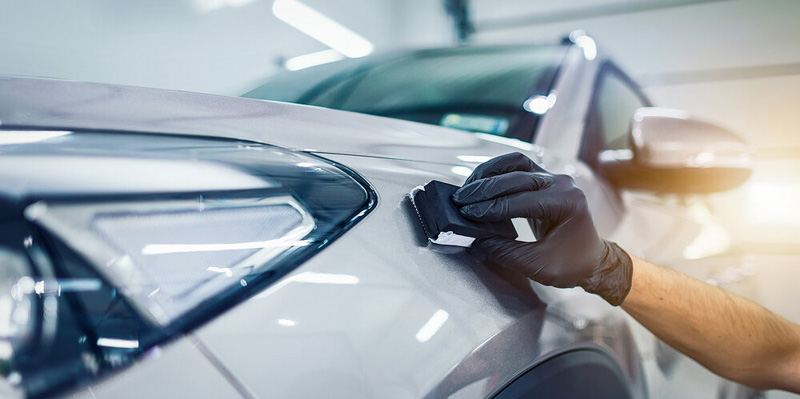
When the automotive industry demands a material that is robust and reliable, then advanced ceramics materials are incorporated into automotive designs. There are numerous beneficial properties of ceramics materials such as thermal and electrical properties which allow them to be utilized in various types of sensors, mechanical seals, ceramic bearings, and valves.
When extreme conditions such as high-temperature environments need highly durable materials, advanced ceramics engineering technology gives all the required elements for the highest performance of the engine and extended lifespan of elements.
Automotive ceramics can be considered as specialized ceramic materials that are utilized to produce various automotive parts. Automotive ceramics produce various components such as various types of sensors, spark plug insulators, and catalytic converter supports.
Ceramics materials are more cost-efficient compared to other metal. Additionally, ceramics are also stronger than plastic and its uses and applications can be found throughout the industry of automobiles. This is because recent developments in car manufacturing need a high level of complexity in automotive components. Moreover, ceramics sensors are utilized in the manufacturing of advanced monitoring systems. For instance, a tire pressure monitoring system that uses ceramics sensors warns the driver if there is any loss of tire pressure or if one of the tired is poorly pressurized.
Elements that are utilized in the engine, exhaust gas system, drive, and powertrains are prone to the maximum amount of stress and different influences. This all occurs because these components expose themselves to extreme pressure and temperature, splash water, and shocks. These are the ideal conditions for ceramics because ceramics are very light in weight, extremely resistant to heat, wear, and corrosion. Additionally, they are electrically and thermally insulating. Because of their incredible reliability, these elements work in core functions where traditional materials fail.
As far as the engine is concerned, heat-resistant ceramic parts, for example, seal rings, bearings, plates, cam discs, seals, valve components, support shell in crankcases, components for fuel and water pumps, and exhaust control valves- make sure about the high level of efficiency, reliable operation, less friction and wear, and reduces exhaust gas and noise emissions.
Automotive engineering is constantly evolving. E-mobility and the complex network of automobile systems call for integrated electronics solutions. Airbags must be able to function efficiently and reliably as other electronically controlled hydraulic or mechanical elements in vehicles. Even when exposed to extreme conditions such as severe thermal and electrical stresses or pushed to driving limits, advanced ceramics fulfill their tasks with the highest level of efficiency and reliability. Ceramic sensors have an important measurement and control functions in all domains of vehicle engineering. They behave as sensors for controls of electronics and give the information about the vehicle’s engine operation, position, and changes in direction.
Ceramic actuators are of absolute necessity in injection systems. More light, a higher level of safety – halogen, xenon or LED light systems incorporated with ceramic elements significantly enhance the light. Optimized thermal management is ensured by advanced ceramics. Moreover, advanced ceramics can remain undamaged by extreme loads.
Ceramics components are light in weight and durable to the maximum level. They create a new outlook for engineers and designers in lightweight construction, design, and protection applications. For instance, Metal Matrix Composites (MMC) with ceramic components is utilized in a lightweight design to lower down weight, fuel consumption, and emissions. Ceramic materials can be applied at particular places to strengthen light metals to endure a high level of tribological, mechanical, and thermal loads, for example in cylinder sleeves, pistons, brakes, or bearings. One of the kinds of transparent advanced ceramic is Perlucor which creates new applications and possibilities of innovative design. It is used in interiors of the vehicle as a high-grade material for various decorative components and inlays.
Perlucor laminates give clear visibility in safety glass panels and lighting components in an extreme environment (e.g. sand abrasion on panes and headlights). Thermal and chemical resistance, high visibility, hardness, durability, and weight savings of around 30 % when contrasted to traditional safety glass make Perlucor perfect for ballistic protection.
Owing to the tremendous benefits and ability to meet the current and future challenges in Automotive engineering, ceramics will continue to evolve and grow in demand in the future. Due to their unique and useful properties, advanced ceramics are among the most efficient materials of the present day. The growing demand for advanced electronic applications in the automotive industry is likely to boost the development of automotive ceramics in the next few years.
They are necessary for improving performance, security, reliability, and environmental compatibility in various ranges of daily applications. Advanced ceramics materials make innovative solutions possible today. The Global Automotive Ceramics Market size is expected to rise at a market growth of 8.9% CAGR during the forecast period.